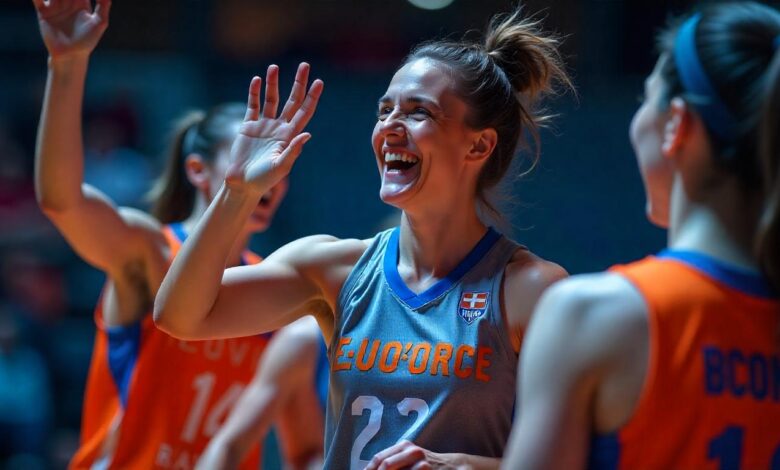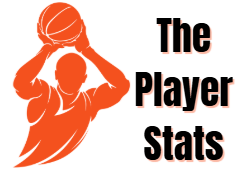Rhythm and Runs: The Psychology of Scoring Streaks in Basketball

Basketball mein scoring runs ka concept sirf points ka silsila nahi hota, balki yeh ek psychological battle bhi hoti hai — jahan momentum ek team ko boost deta hai aur doosri team ko pressure mein daal deta hai. Jab ek team run karti hai, toh uska confidence barhta hai, players ka coordination behtar hota hai, aur poora stadium unke saath ho jata hai. Dusri taraf, opponents par yeh runs mental stress create karte hain, jiski wajah se wo apna game lose karne lagte hain. Is article mein hum basketball ke runs ke psychological aspects ko samjhenge aur Boston Celtics vs Indiana Pacers ke ek match ke kuch stats ke zariye examples bhi dekhenge.
Contents
Scoring Runs: Sirf Numbers Se Zyada
Basketball mein scoring runs tab hote hain jab ek team consecutive points score karti hai bina opponent ko jawab dene ka mauka diye. Yeh runs kabhi chhote (5-7 points) hote hain, kabhi lambe (10+ points), aur yeh game ka flow badal sakte hain. Lekin iska asli impact psychological hota hai.
Jab players run pe hote hain, unka confidence skyrocket kar jata hai. Shots aate hain, passes accurate hote hain, defense tight ho jata hai. Yeh hot hand phenomenon kehlata hai — jab player ya team lagatar achha perform karti hai toh unka brain “I can do this” signal bhejta hai, jo unki decision-making aur execution ko improve karta hai.
Celtics vs Pacers: Ek Example
Boston Celtics aur Indiana Pacers ke beech ek recent match mein aapne dekha hoga ki Celtics ne ek crucial scoring run lagayi thi. Jayson Tatum ne is dauran 15 points lagatar score kiye, jisne team ko momentum mein daal diya. Unka shooting percentage us run ke dauran 75% se upar tha, jo ek clear indication tha ki unka confidence aur rhythm kitna high tha.
Dusri taraf, Pacers ke Tyrese Haliburton ne koshish ki team ko wapas laane ki, lekin psychological pressure aur Celtics ke aggressive defense ke saamne woh thoda hesitant ho gaye. Unke turnovers aur rushed shots ne unki team ki rhythm ko tod diya. Yeh wo psychological moment tha jab Celtics ka run double ho gaya aur game control unke haath mein aa gaya.
Momentum ke Peeche ka Science
Momentum ya runs ke peeche psychology ka bahut bada haath hota hai. Jab ek team run pe hoti hai, toh unka collective efficacy yaani team ki apni ability par bharosa barhta hai. Yeh confidence contagious hota hai — ek player ka energy dusre player ko bhi affect karti hai.
Isi tarah, crowd ka energy bhi team ko lift karta hai. Jab stadium mein shor machta hai aur fans support karte hain, toh players adrenaline aur focus dono mehsoos karte hain. Yeh emotional contagion team ke liye ek powerful tool hai.
Opponents ke liye yeh moments stressful hote hain. Unka focus disrupt hota hai, wo apni strategy ko leke doubt karte hain, aur mistakes karne lagte hain. Yeh cognitive overload unke decision-making ko affect karta hai, jisse wo defensive lapses ya inefficient offense karte hain.
Coaching and Leadership During Runs
Coaches aur team leaders ke liye runs ko control karna aur manage karna sabse bada challenge hota hai. Jab aap run pe ho, toh coaches zyada se zyada players ko encourage karte hain, unko simple aur confident plays execute karne ke liye bolte hain. Leadership bhi players ke beech coordinate karne mein help karti hai, taaki wo apna rhythm na kho dein.
Pacers ke Haliburton ne jab Celtics ke run ke against timeout liya, toh unhone apni team ko calm karne ki koshish ki aur focus wapas lane ki baat ki. Yeh ek psychological reset hota hai, jahan aap apni team ko negative momentum se nikalne ki koshish karte hain.
Physical Manifestation of Momentum
Momentum sirf mental nahi, physical bhi hota hai. Jab team run mein hoti hai, players ka energy level high hota hai, wo zyada aggressively rebound karte hain, faster transition karte hain, aur vocal leadership dikhaate hain. Body language positive hoti hai — heads up, chests out, confident strides.
Opponents ki body language often opposite hoti hai — heads down, shoulders slouched, hesitant movements. Yeh visual cues aur feedback loop dono ko influence karte hain, aur momentum aur bhi gehra hota jata hai.
Psychological Theories Behind Runs
- Attentional Control Theory: Jab pressure badhta hai, players ka focus narrow ya broad ho sakta hai. Runs ke dauran, team jo scoring kar rahi hoti hai apni attentional control ko better manage karti hai, jabki opponents distracted ho jaate hain.
- Emotional Contagion: Ek player ka positive emotion teammates tak phailta hai, aur poora team energized hota hai.
- Self-efficacy: Team ka apne skills aur performance par bharosa jab barhta hai, toh wo complex plays confidently execute karte hain.
Conclusion: Runs are Mental Warfare
Basketball mein runs sirf point runs nahi hote, balki psychological warfare hote hain jisme confidence, focus, energy aur leadership ki badi role hoti hai. Celtics vs Pacers match ne dikhaya ki kaise ek player ka hot streak (Tatum ka run) team ko momentum de sakta hai, aur kaise opponent (Haliburton aur Pacers) ko mentally aur tactically respond karna padta hai.
Jab teams apni mental state ko samajh kar runs ko ride karti hain, toh wo apne game ko higher level pe le jaa sakti hain. Aur jab opponents runs ko break karne ke liye strategic aur psychological tools use karte hain, toh wo game ko wapas apni taraf kheench sakte hain.
Yeh mental tug-of-war hi basketball ko itna compelling banata hai—jahaan rhythm aur runs, ek aise battlefield hain jahan sirf physical skill nahi, balki dimag aur dil bhi khelte hain.





